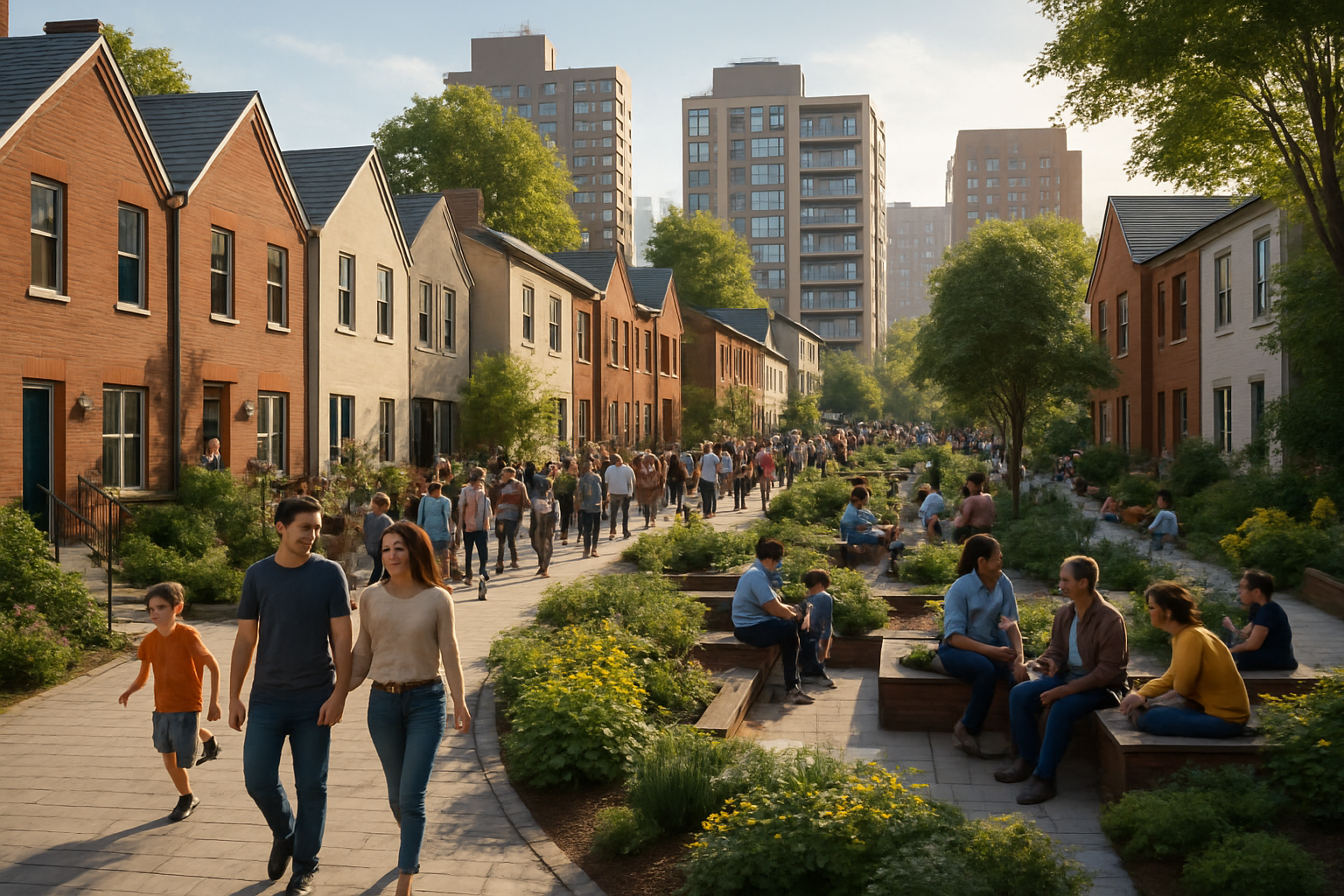Microdistricts: The Urban Villages Reshaping Community Life
In an era of urban sprawl and social disconnection, a quiet revolution is taking place in cities worldwide. Microdistricts, compact urban neighborhoods designed for self-sufficiency and community integration, are emerging as a powerful solution to modern urban challenges. These planned communities offer a fresh approach to city living, blending the convenience of urban amenities with the close-knit atmosphere of village life. Read below to explore how microdistricts are transforming the urban landscape and redefining what it means to live in a city.

The concept of microdistricts isn’t entirely new, but its modern incarnation is reshaping urban planning and community dynamics in unprecedented ways. Originating in the Soviet Union as a response to rapid urbanization, microdistricts have evolved into sophisticated urban ecosystems that prioritize walkability, sustainability, and social cohesion. Today, these urban villages are gaining traction globally as cities grapple with issues of overcrowding, social isolation, and environmental sustainability.
The Anatomy of a Microdistrict
At its core, a microdistrict is a self-contained neighborhood designed to meet residents’ daily needs within a compact, walkable area. Typically spanning 10 to 60 hectares, these urban villages house between 3,000 to 20,000 residents. The key feature of microdistricts is their mixed-use design, integrating residential buildings with essential services such as schools, medical clinics, grocery stores, and recreational facilities. This thoughtful layout ensures that residents can access most of their daily necessities within a 15-minute walk from their homes.
Fostering Community Connections
One of the most significant benefits of microdistricts is their ability to foster strong community bonds. By creating shared spaces and encouraging pedestrian traffic, these neighborhoods naturally facilitate social interactions. Community gardens, public squares, and local events become focal points for residents to meet and connect. This design philosophy directly counters the trend of social isolation often associated with modern urban living, creating a sense of belonging that many city dwellers find lacking in traditional urban environments.
Sustainability at the Core
Microdistricts are inherently more sustainable than conventional urban developments. Their compact design reduces the need for car ownership and promotes the use of public transportation, cycling, and walking. Many modern microdistricts incorporate green technologies such as solar panels, rainwater harvesting systems, and community composting facilities. These features not only reduce the environmental footprint of the neighborhood but also create a shared sense of responsibility for sustainability among residents.
Economic Benefits and Local Entrepreneurship
The microdistrict model offers unique economic advantages. By centralizing essential services and promoting local businesses, these neighborhoods create a thriving local economy. Small businesses and startups find fertile ground in microdistricts, benefiting from a built-in customer base and reduced overhead costs. This economic ecosystem not only provides job opportunities for residents but also ensures that money circulates within the community, strengthening local economic resilience.
Challenges and Considerations
While microdistricts offer numerous benefits, their implementation is not without challenges. One of the primary concerns is the potential for these communities to become isolated or exclusive, possibly exacerbating urban segregation. Urban planners and policymakers must carefully consider how to integrate microdistricts into the broader urban fabric to ensure they enhance, rather than divide, city life. Additionally, the high initial costs of developing microdistricts can be a barrier, requiring innovative funding models and public-private partnerships.
The Future of Urban Living
As cities continue to grow and evolve, microdistricts represent a promising model for sustainable, community-oriented urban development. Their ability to address multiple urban challenges simultaneously – from social isolation to environmental sustainability – makes them an attractive option for cities looking to improve quality of life for their residents. While not a one-size-fits-all solution, the principles underlying microdistricts can be adapted to suit various cultural and geographical contexts, offering a flexible template for the cities of tomorrow.
The rise of microdistricts signals a shift in how we conceive of urban living. By prioritizing human-scale development and community connections, these urban villages offer a counterpoint to the anonymity and disconnection often associated with big city life. As more cities experiment with this model, we may be witnessing the early stages of a fundamental reimagining of urban spaces – one that places community, sustainability, and quality of life at the heart of city planning.





